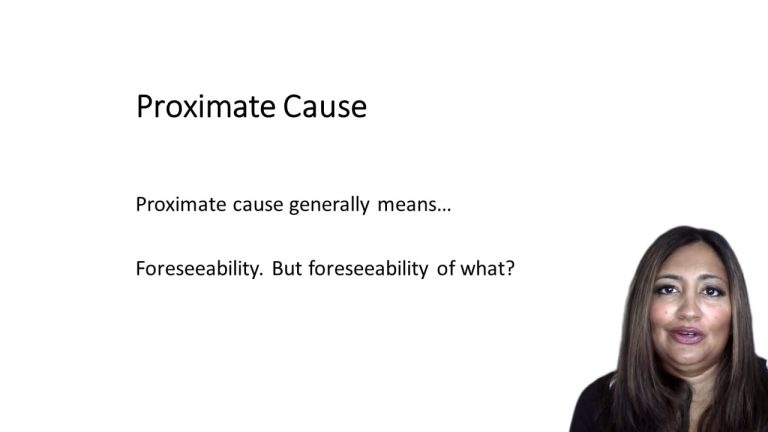SmartBrief
Confirm favorite deletion?
Torts Keyed to Epstein
Wagner v. International Ry.
Citation:
133 N.E. 437 (N.Y. 1921)Facts
Plaintiff and his cousin Herbert boarded a train car at a station near the bottom of a trestle. Many other passengers were entering at the same time and blocked admission to the aisle of the train car. The platform had several doors, but the conductor failed to close them. The train took a curve without slowing down and threw Herbert out of the car where the trestle becomes a bridge. The cry of “man overboard” was raised, and the car went across the bridge, stopping near the foot of the incline. Darkness had fallen, but plaintiff exited the train and walked the trestle, looking for his cousin’s body. Plaintiff claims that the conductor instructed him to do so and even followed him with a lantern (the conductor denies both of these statements). Other passengers, assisting in the search, went under the trestle, where they found Herbert’s body. Above them, plaintiff found Herbert’s hat on a beam, lost his footing, and fell to the ground below.
Only StudyBuddy Pro offers the complete Case Brief Anatomy*
Access the most important case brief elements for optimal case understanding.
*Case Brief Anatomy includes: Brief Prologue, Complete Case Brief, Brief Epilogue
- The Brief Prologue provides necessary case brief introductory information and includes:
Topic:
Identifies the topic of law and where this case fits within your course outline.Parties:
Identifies the cast of characters involved in the case.Procedural Posture & History:
Shares the case history with how lower courts have ruled on the matter.Case Key Terms, Acts, Doctrines, etc.:
A case specific Legal Term Dictionary.Case Doctrines, Acts, Statutes, Amendments and Treatises:
Identifies and Defines Legal Authority used in this case.
- The Case Brief is the complete case summarized and authored in the traditional Law School I.R.A.C. format. The Pro case brief includes:
Brief Facts:
A Synopsis of the Facts of the case.Rule of Law:
Identifies the Legal Principle the Court used in deciding the case.Facts:
What are the factual circumstances that gave rise to the civil or criminal case? What is the relationship of the Parties that are involved in the case.Issue(s):
Lists the Questions of Law that are raised by the Facts of the case.Holding:
Shares the Court's answer to the legal questions raised in the issue.Concurring / Dissenting Opinions:
Includes valuable concurring or dissenting opinions and their key points.Reasoning and Analysis:
Identifies the chain of argument(s) which led the judges to rule as they did.
- The Brief Prologue closes the case brief with important forward-looking discussion and includes:
Policy:
Identifies the Policy if any that has been established by the case.Court Direction:
Shares where the Court went from here for this case.
Topic Resources
Topic Outline
Topic Refresher Course

 13m 43s
13m 43s